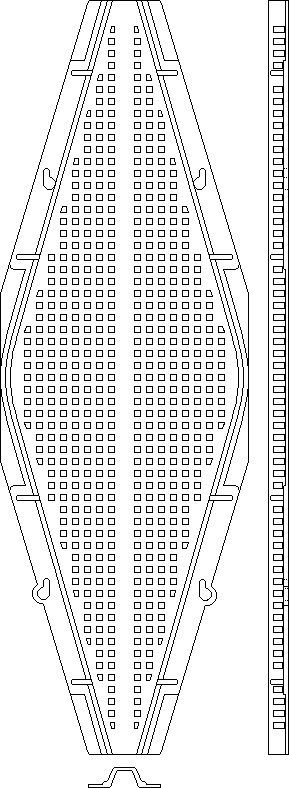|
|
|
|---|
Lozenge Bee Escape Board
(Some call it a Rhombus Escape)
A moulded plastic Canadian type escape
Lozenge Bee Escape Board
|
|---|
|
This injection moulding is made in France by Nicot from a white/translucent plastic. It is quite large, being 377 mm long x 124 mm wide at the centre portion. Overall depth is 10 mm with the two exits being 8.5 mm wide. There are a large amount of holes (3 mm x 3 mm) in the structure which will give good communication between the bees above and the bees below. I mount this type of moulding on the underside of a 9 mm plywood board that has a central 33 mm hole in it. I wonder if the size of this hole is significant? I position the device diagonally so that the bees leaving the exits have the greatest space to disperse into. There are four 'keyhole' shaped holes that allow for easy attachment using four round headed screws and a sliding action. Being a 'belt and braces' sort of person I have drilled some extra holes in the flanges and fitted more screws. Whilst I have used this type of escape many times, my experience of it is much less than with the Eight Way Escape which I have always favoured. Matthew Allan reports that he has compared large numbers of rhombus escapes with the eight way type and that in his opinion the rhombus is better... He surmises that this is due to the large volume of the central area of the rhombus type. I have thought about this myself and come to a different conclusion... I would expect any difference to be more due to the numbers of holes and the ability of the bees to communicate between the two groups. Has anyone any comments on this? |

|
|---|
Written... Summer 2000, Revised... 04 April 2002, Revised... 09 October 2003, Upgraded... 20 September 2005,
|